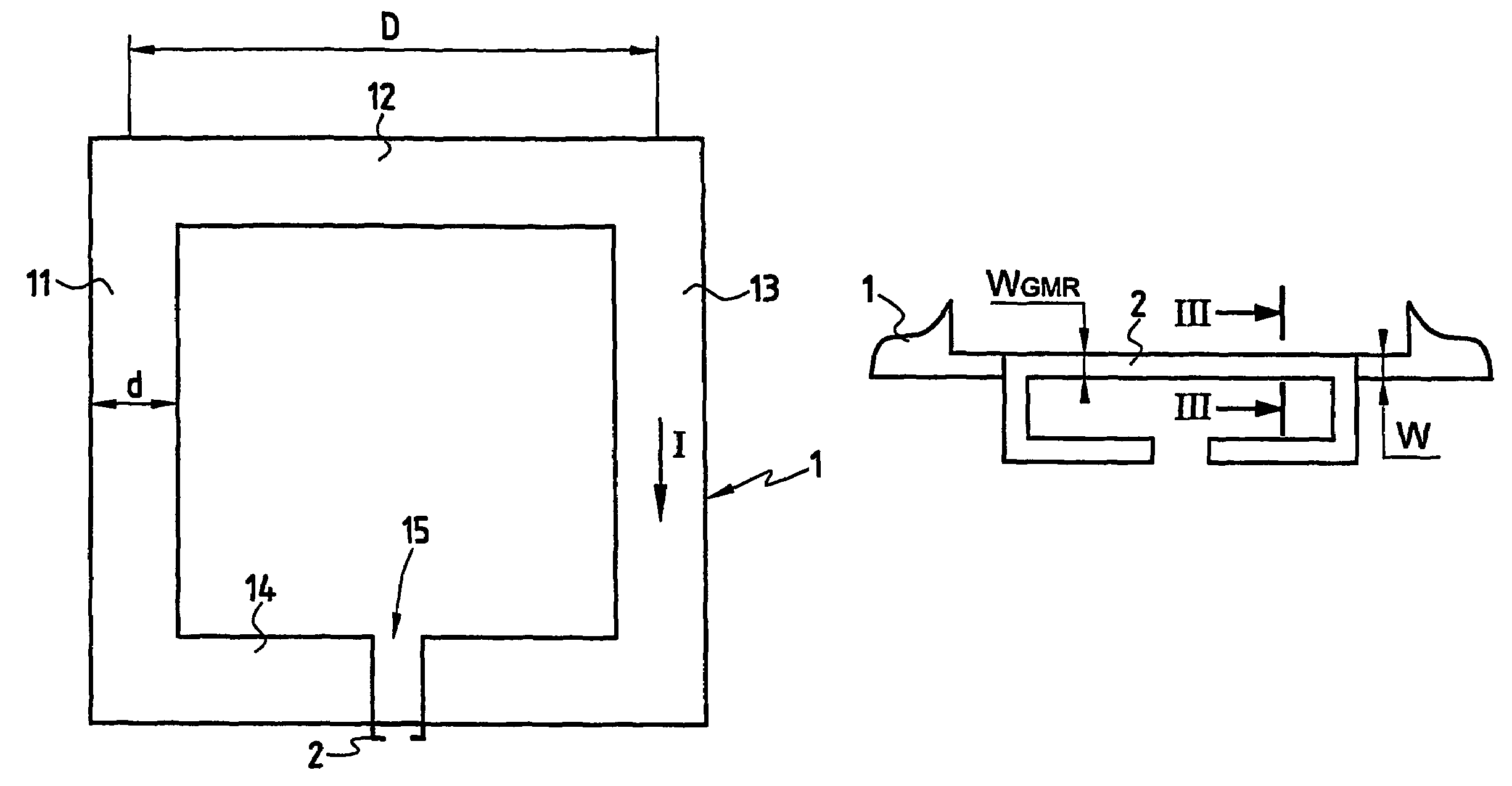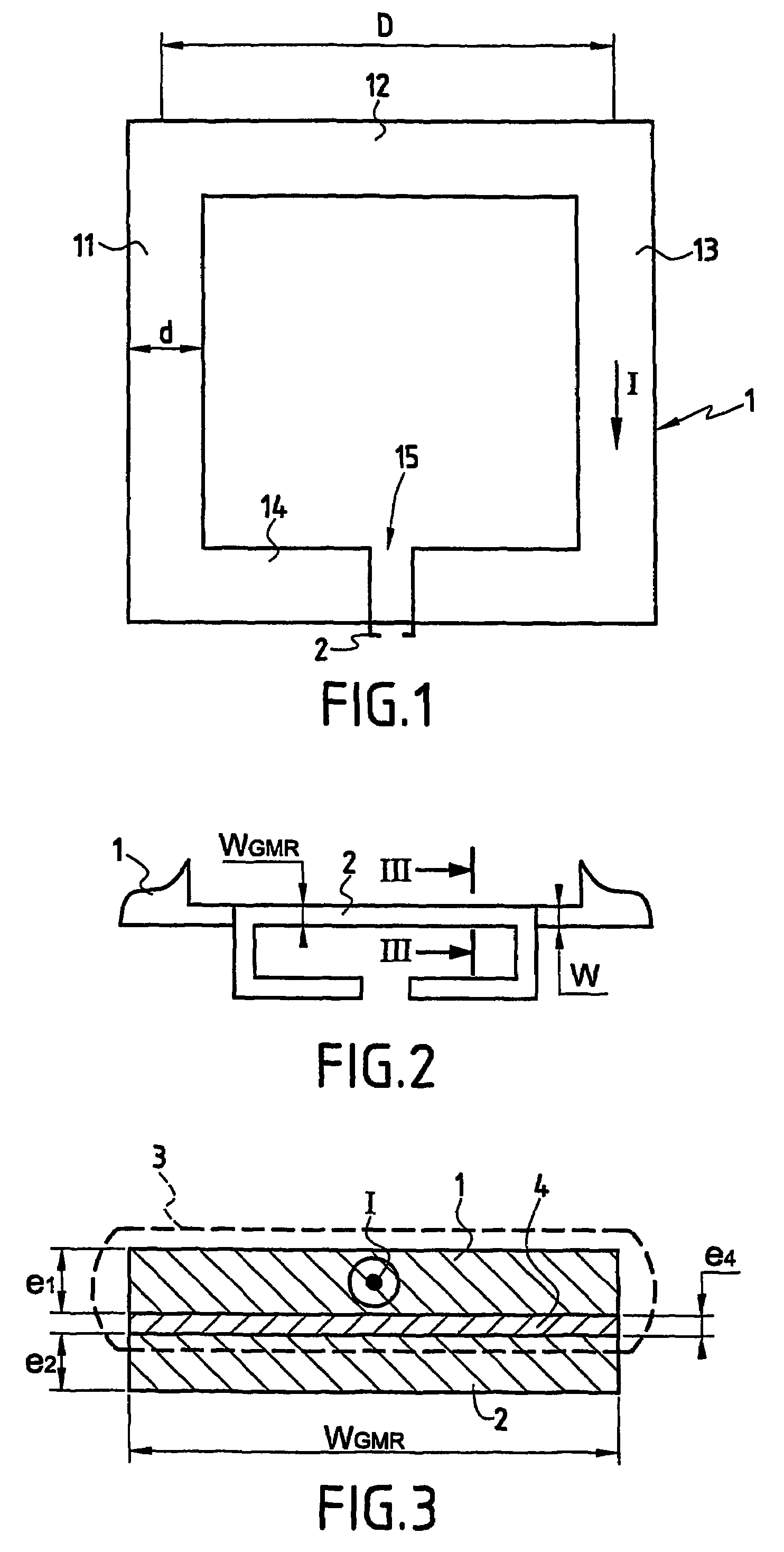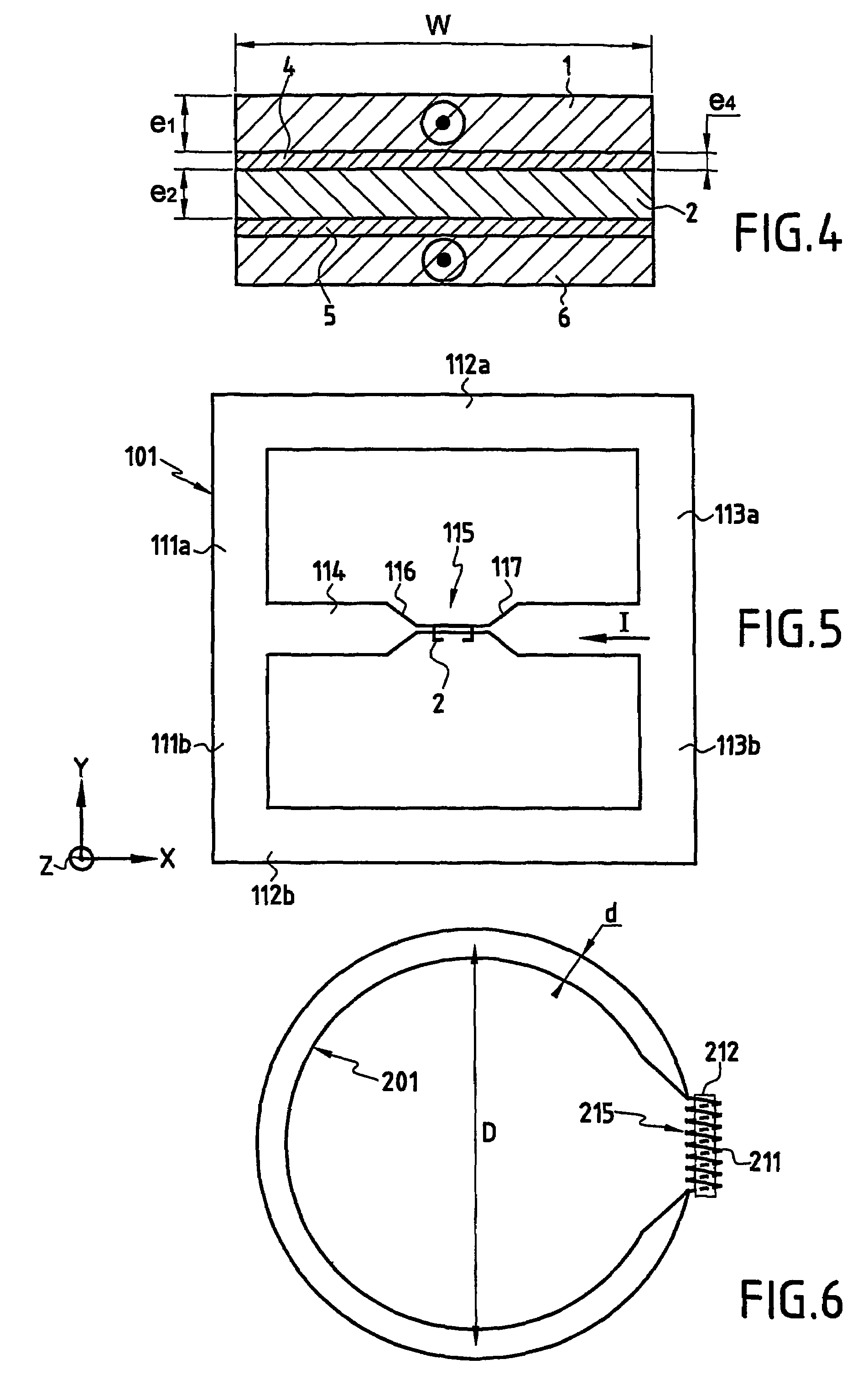Device for sensing a magnetic field
a magnetic field and sensor technology, applied in the direction of magnetic field magnitude/direction, measurement devices, instruments, etc., can solve the problems of limiting the technical applicability of these magnetic sensors, limiting the maximum achievable flux transfer coefficient, and high sensitivity of “bare” squid not enough for the most demanding
- Summary
- Abstract
- Description
- Claims
- Application Information
AI Technical Summary
Benefits of technology
Problems solved by technology
Method used
Image
Examples
Embodiment Construction
[0063]The physical working principle and basic design of a magnetic sensor based on the present invention is shown in FIG. 1. The superconducting flux guide 1 consists of a square shaped closed loop lithographically etched out of, for example, a high-Tc superconductor thin film. The loop comprises a circumferential path with a first branch 12, two lateral branches 11, 13 and a fourth branch 14 which is parallel to the first branch 12.
[0064]A change ΔB in the magnetic field component perpendicular to the plane of the loop 1 induces a change ΔI in the persistent current I circulating in the loop 1. The magnitude of ΔI is determined by the requirement that the total flux through the closed superconducting loop stays constant (Meissner effect). Therefore, ΔI=ΔB*AFFDT / LFFDT, where AFFDT and IFFDT are the surface area and inductance of the loop 1.
[0065]The inductance of a square shaped loop of superconducting thin film is LFFDT=(μ0 / 2π)*D*[Ln(4D / d)−2.35] (see FIG. 1). To simplify the formu...
PUM
 Login to View More
Login to View More Abstract
Description
Claims
Application Information
 Login to View More
Login to View More - R&D
- Intellectual Property
- Life Sciences
- Materials
- Tech Scout
- Unparalleled Data Quality
- Higher Quality Content
- 60% Fewer Hallucinations
Browse by: Latest US Patents, China's latest patents, Technical Efficacy Thesaurus, Application Domain, Technology Topic, Popular Technical Reports.
© 2025 PatSnap. All rights reserved.Legal|Privacy policy|Modern Slavery Act Transparency Statement|Sitemap|About US| Contact US: help@patsnap.com



